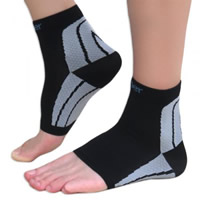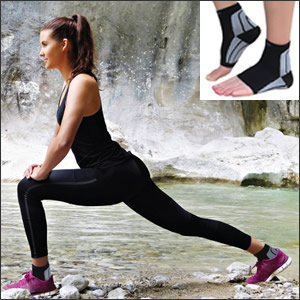Plantar Fasciitis, aka Policeman’s Heel, is the swelling of the tissue that runs across the bottom side of your foot and connects the bone of your heel to your toes. It is the most common cause of pain in the heel. People, like police officers, that on their feet for extended periods of time are at risk of developing this condition, hence the nickname Policeman’s Heel. But did you know, Plantar Fasciitis is common in runners? If you are a runner or have a job or hobby that keeps you on your feet, here’s what you need to know about Plantar Fasciitis.
An Overview of Plantar Fasciitis
Plantar Fasciitis refers to a certain kind of inflammation and swelling that can occur in the band of soft tissue on the bottom of your foot that connects your heel bone to your toes. Plantar Fasciitis can cause stabbing pain as you wake up in the morning and take your first steps. Often the pain subsides as you walk around, but it can come back again after extended periods of standing or as you simply rise to your feet after sitting for a bit.
Signs and Symptoms of Plantar Fasciitis
Pain. Simply put, the signs and symptoms of Plantar Fasciitis is pain. Pain when you first wake. Pain when you get up after sitting. Pain when you have been standing on your feet for a long time. Pain when you are running or have finished running. Pain when you are exercising. And important to note, the pain associated with Plantar Fasciitis is typically worse and more noticeable after exercise and exertion, not during.
Risk Factors for Plantar Fasciitis
Risk factors for Plantar Fasciitis include:
- Age – 40 to 60 years of age are higher risk than other ages
- Exercise – running, jumping, ballet and aerobic dancing
- Foot shape – having a flat foot or having a high arch
- Foot mechanics – having an abnormal way of walking or running
- Obesity – having excess pounds putting stress on your plantar fascia
- Activities – work and hobbies that keep you on your feet
Treating Plantar Fasciitis
Plantar Fasciitis cannot be cured with medication, though pain medications can provide temporary relief. Options to treat Plantar Fasciitis include:
- Physical therapy – stretching exercises to strengthen lower leg muscles and stretch tendons which improve heel and ankle stability
- Night splints – splints to stretch the arch of your foot and calf while you sleep
- Orthotics – arch supports to distribute weight and pressure to your foot more evenly
- Compression – foot sleeves to improve blood flow to the tissues throughout the Plantar Fascia
- Ice – to reduce swelling and relieve pain
- Rest – as much as possible, refrain from the activity that is causing your Plantar Fasciitis
What You Should Do
As with any medical condition, you should regularly see your doctor and follow your doctor’s orders. Take your Plantar Fasciitis condition seriously, don’t just cope with it or ignore it. The pain will remind you that it is still with you. Rest and exercise, and if you have to be on your feet, wear compression foot sleeves for muscle support, improved blood flow, and comfort.
For More Information on Plantar Fasciitis
National Library of Medicine – Plantar Fasciitis
Mayo Foundation for Medical Education and Research – Plantar Fasciitis
WebMD – What is Plantar Fasciitis?
Uvoider Compression Foot Sleeves (20-30 mmHg)
Uvoider Compression Foot Sleeves – More Support™ Series (20-30 mmHg)


